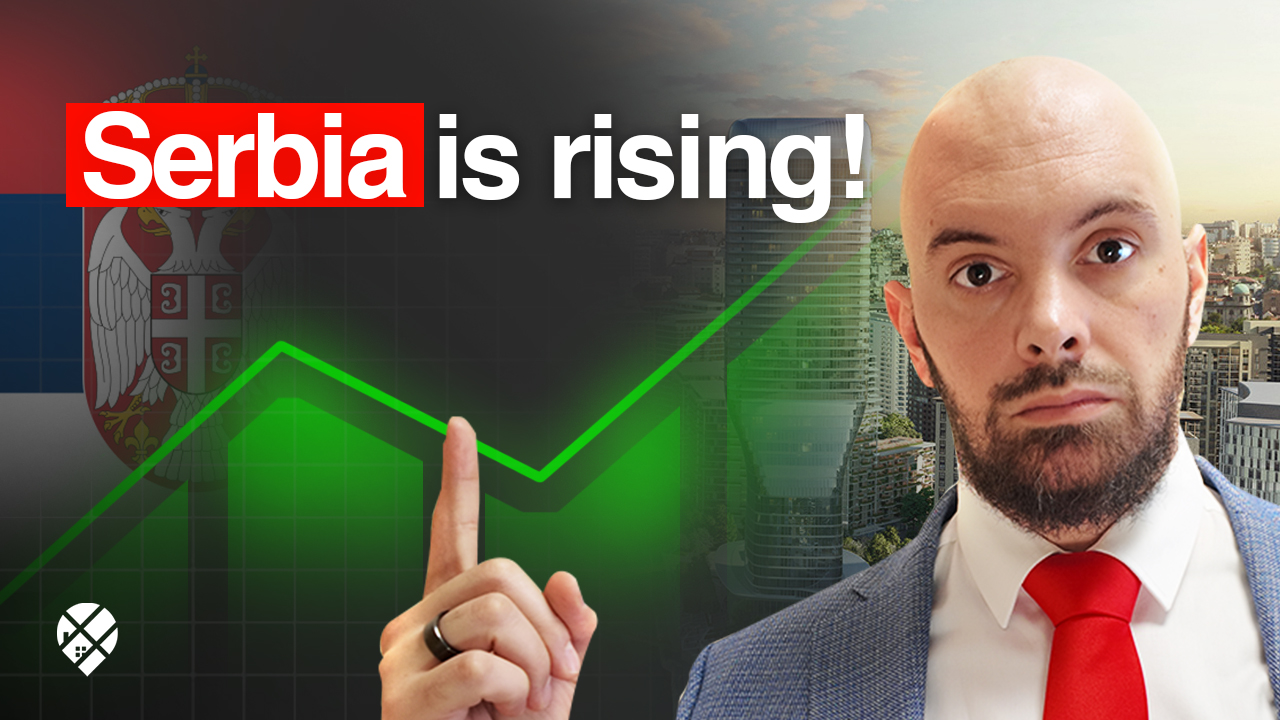Is Serbia's Economy Growing? Why Expats and Investors Are Paying Attention in 2025
TL;DR: Despite political protests and global uncertainty, Serbia’s economy is outperforming much of Europe. With projected GDP growth of 3.2% in 2025 and a solid 3.8% in 2026, foreign investors, entrepreneurs, and expats are increasingly turning to Serbia for opportunity. If you’re seeking a rising market with affordable real estate, low taxes, and long-term upside, Serbia deserves a serious look.
Watch the FULL VIDEO

Serbia’s Growth Outlook for 2025–2026
The European Commission’s Spring 2025 Economic Forecast confirms what many on the ground already sense: Serbia is growing, even amid political tension and foreign skepticism.
| Country | Projected GDP Growth (2025) |
|---|---|
| Serbia | 3.2% |
| Albania | 3.5% |
| Montenegro | 3.2% |
| Bosnia & Herzegovina | 2.3% |
| North Macedonia | 3.1% |
| EU Average | 1.1% |
| Eurozone Average | 0.9% |
| Canada (10-year avg.) | 0.5% |
🇷🇸 What’s Driving Serbia’s Economic Growth?
Despite recent protests and U.S. sanctions targeting Serbian-Russian energy ties, the European Commission attributes Serbia’s resilience to:
Domestic demand and private consumption
A strong labor market, especially in IT and manufacturing
Rising foreign direct investment (FDI)
Ongoing public and private infrastructure development
In real terms? Factories are being built. Real estate is booming. People are still spending.
“Even during the student protests and brief road blockades, daily life in Serbia continued like normal. The idea that the economy has frozen is simply not true.”
Are the Protests & Sanctions Hurting Growth?
Yes—but only marginally.
According to the EU report, foreign investor confidence has dipped slightly due to:
Political instability
Blockades in early 2025
Sanctions risk against companies like NIS, Serbia’s state-linked petroleum firm
However, the data also shows:
FDI remains strong
New construction and factories continue
Real estate demand is rising, not falling
“I personally know professionals working at NIS. Reserves are full. Even if sanctions happen, the company is prepared to weather 6–12 months without issue.”
Real Estate & Business Opportunities in Serbia
Why Now Is a Smart Entry Point:
Real estate in Belgrade and Novi Sad is still more affordable than most EU cities
Village properties and outskirts remain cheap for early investors
New infrastructure is being built in anticipation of the 2027 Expo, which is expected to bring 4 million+ visitors
Early movers get higher ROI before investor confidence fully rebounds
“If you can look past temporary political noise, you’ll get in before the next wave of foreign capital floods in.”
What About Business Setup?
Serbia remains an excellent country to:
Set up a limited liability company (DOO) with 15% corporate tax
Open a freelancer sole proprietorship with flat-rate tax under €300/month
Tap into skilled labor markets in IT, construction, and manufacturing
Serve EU and global clients with low overhead
Bonus: Non-EU entrepreneurs can get temporary residence permits by setting up a company or proving foreign income.
Should Serbia Join the EU?
While Serbia is officially a candidate country, many locals—and foreign investors—are skeptical of the benefits of full EU membership.
“Joining the EU now would be like arriving at a party at 3 a.m.—the music’s bad, the food’s gone, and everyone’s left.”
Historically, new EU members like Croatia and Bulgaria faced rising costs, stagnant wages, and fewer entrepreneurial incentives post-accession. Serbia, on the other hand, currently benefits from EU funds without full regulation—a sweet spot.
The Bigger Picture: Serbia Is the Balkans’ Economic Powerhouse
In terms of scale, infrastructure, and foreign interest, Serbia leads the Balkans. It has:
The most diversified economy in the region
The largest population and labor market
Consistent investment from Germany, China, UAE, and the U.S.
Key logistics and transport hubs connecting Europe and Asia
“Whether or not Serbia joins the EU, it's already playing a major role in European trade and energy.”
Deeper Growth Potential: 2027 Expo and Beyond
The upcoming EXPO 2027 in Belgrade is expected to:
Draw 4 million+ global visitors
Accelerate hotel and tourism infrastructure
Trigger real estate spikes and international interest
This event could position Serbia as a regional tech, tourism, and trade hub.
Final Thoughts: Is Serbia a Good Place to Invest or Relocate in 2025?
If you’re frustrated with stagnant economies, rising taxes, and political dysfunction in the West, Serbia offers a compelling alternative:
Strong GDP growth
Affordable entry points in real estate and business
A skilled labor force
Rising demand and international relevance
👉 Don’t wait until the party’s full. Serbia’s economic table is still being set—and there’s room for bold movers.
FAQs: Serbia’s Economic Growth & Investment Outlook
Is Serbia’s economy growing despite the protests?
Yes. GDP growth for 2025 is projected at 3.2%, well above EU and North American averages.
Can foreigners set up companies in Serbia?
Absolutely. DOO formation is simple, cost-effective, and offers legal residence pathways.
Is now a good time to buy real estate in Serbia?
Yes—especially before EXPO 2027. Prices in major cities are rising, but village and secondary cities remain affordable.
Is Serbia joining the EU soon?
Unlikely. While candidate status remains, public and investor sentiment leans against it due to potential economic downsides.